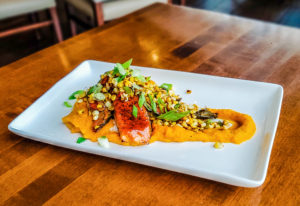 Thousand years ago, the Spice Trade was the world’s biggest industry that began in the Eastern expanse to the Western portion of the world. The herbs and spices were even weighed and priced, similar to gold. Thus, the quantity and quality of herb and spice possession determine the wealth, power, and influence of land or civilization.
Thousand years ago, the Spice Trade was the world’s biggest industry that began in the Eastern expanse to the Western portion of the world. The herbs and spices were even weighed and priced, similar to gold. Thus, the quantity and quality of herb and spice possession determine the wealth, power, and influence of land or civilization.
However, the price of the spices has declined throughout the years because the production has increased due to heightened demand. Therefore, the spices that are sold today are not priced similarly to gold and minerals before. Although it has lost its value in the market, the spices have found a greater purpose in the food industry, especially in the kitchen pantry.
Since herbs and spices have become essential in enriching the quality of taste of food, it’s important that you have a list of all culinary spices to add and replenish your cupboard—ready and available.
-
Salt
Without a pinch of salt, the food becomes bland and unappetizing. In fact, it’s one of the primary culinary condiments that every kitchen should have. But, there’s more to salt than the lies in it; it acts as a preservative that prolongs the shelf life of perishable and semi-perishable goods. The substances in the salt contain microbial-killing agents.
-
Pepper
Before peppers are stored in containers and packs, it first undergoes drying to extract most of its flavor. Typically, you can select and buy two types of peppers in the market, the whole and ground pepper. Furthermore, peppers come in various colors and intensity, such as black and white. The black pepper is used as a seasoning for grilled steak because of its mild heat. Meanwhile, the white pepper is incorporated in white sauces to make it flawless-looking.
-
Oregano
Oregano is an essential culinary condiment in the Mediterranean and Eurasian cuisines. This herb is even regarded as a primary ingredient in most Italian dishes. In cooking, you can either use freshly-picked or dried oregano depending on the food you’re cooking. You can use fresh oregano if you’re preparing a salad or dressing and a dried one if you’re roasting or pan-frying chicken, fish, or lamb.
-
Thyme
The thyme is a member of the mint family that has a lemony and minty flavor. It is commonly used in French, Italian, Meditteranean, and American cuisines. When you want to uplift the taste of your plain chicken breast, you can add a dash of ground thyme. It also gives a delicate flavor to soups and sauces, which exudes a warm and hearty sensation.
-
Rosemary
The rosemary is a native Mediterranean herb that can either be used as ground and fresh. Dried and ground rosemary pleasantly provides herbal flavor, which amplifies the meat’s taste when used as a seasoning. Meanwhile, the fresh rosemary is a great addition to desserts, such as strawberry tarts, because it intensifies and gives a distinct taste.
-
Cumin
Cumin is one of the primary ingredients in making curry powder or mixture. It’s an herb that’s widely used in Mediterranean and Indian cuisine. Commonly, this spice is used as a seasoning for grilled chicken and lamb. If you love cauliflower, you can coat it with cumin, salt, and pepper, and then roast it for an intensified taste.
-
Paprika
Paprika is a ground spice from dried fruits like sweet peppers, bell peppers, and tomato peppers. Although it has an intense ruby-red color, most paprika has a milder, subtle, and sweet taste. It’s used in making sausages, soups, rice pilafs, and stews because it adds a savory taste. You can observe that this ground spice is used in Thai, Mexican, and Hungarian cuisines.
-
Allspice
The allspice is a dried and ground spice from the berries of Pimenta dioica, a native tree in the Caribbean region. Besides, it’s one of the ingredients when making a curry paste or powder. Since it also has a sweet taste, this spice is used in baking and desserts. In fact, the combination of banana and allspice in muffins or bread is a match made in heaven.
-
Star Anise
Star anise is a star-shaped fruit pod that’s native in Asian countries like China, Vietnam, and Thailand. It has a sweet, peppery, and licorice-like flavor, which adds depth to stews and marinades. The star anise is also used to add flavors in fruit preserves like jackfruit, strawberry, and mango preserves.
-
Saffron
Saffron is currently the most expensive spice in the market and is native to the Mediterranean region. The dried stigmas are made into threads to use in various foods. Saffron has a subtle floral flavor and a vibrant color that makes the food visually appealing and tasty. It’s usually incorporated in risottos, rice, seafood, meat, and poultry.
Takeaway
Although the price of these herbs and spices has declined, these condiments have regained their value and made an impact in the culinary world. These condiments might not produce power and money, but the lasting flavor they exude and explode in the palate remains, adding a value greater than wealth.
